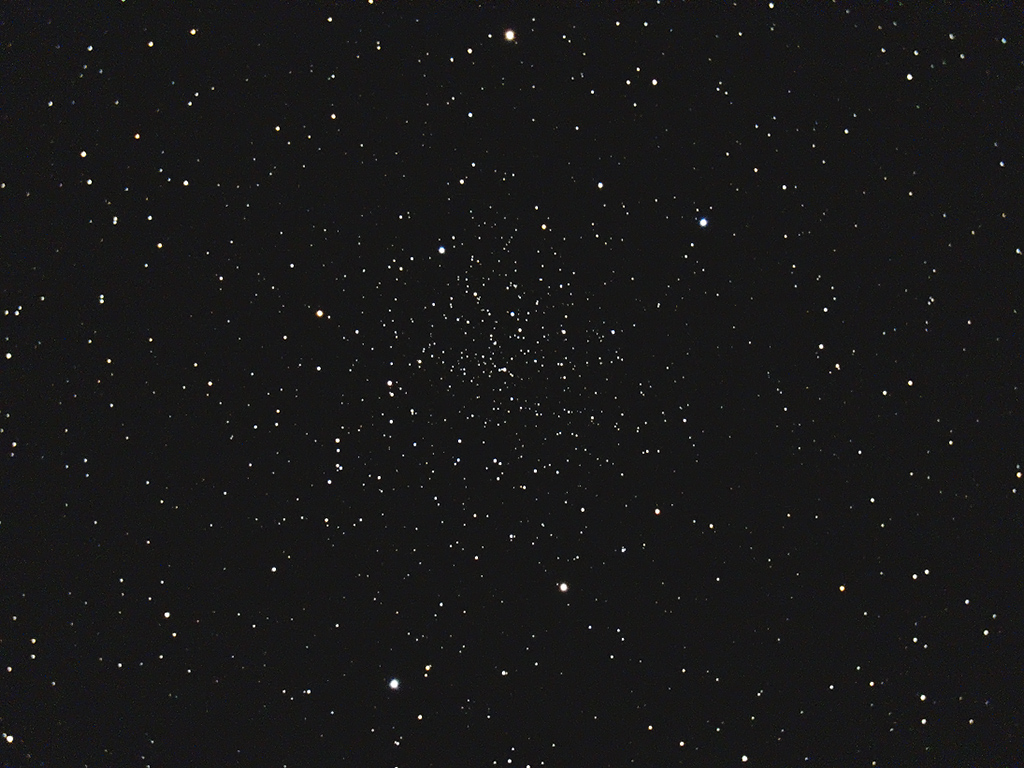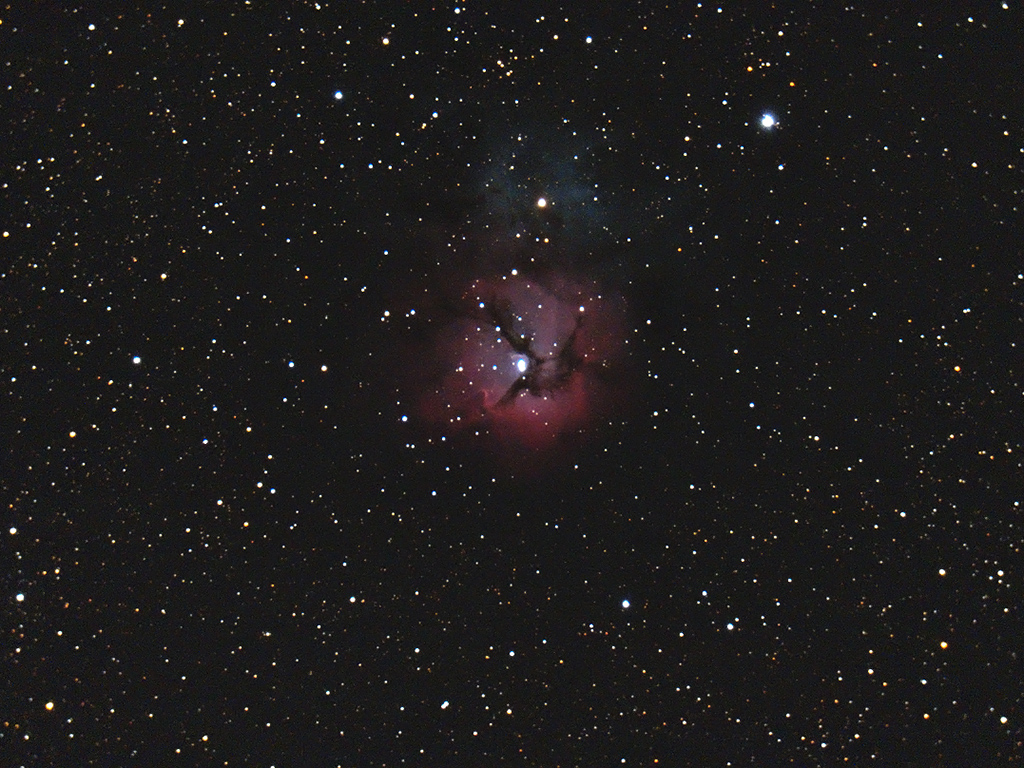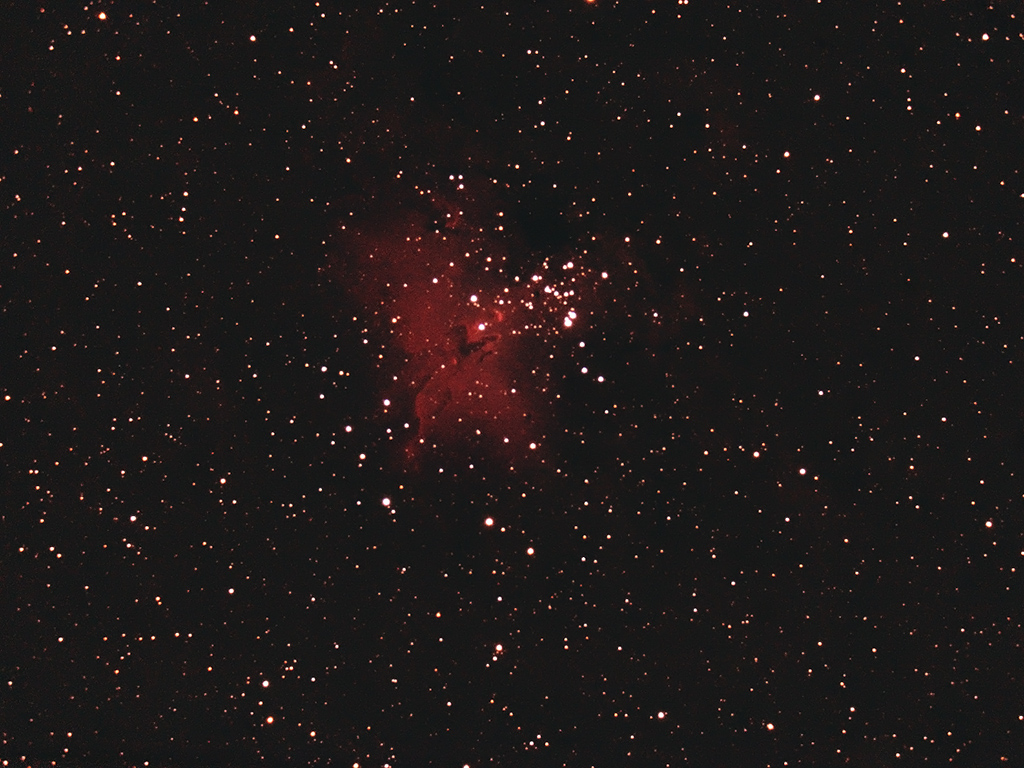
Telescope: LXD75 SC8 @ f/6.3, LX65 mount, altaz mode
Camera: Baader modified Canon 600Da, interval timer
Filter: GSO IR Blocking Filter
Guide scope: None
Exposure: 38x10sec, ISO 1600, saved as RAW
Darks: Internal (Long Exposure Noise Reduction On)
Flats: 32×1/25sec, Tee shirt flats taken at dusk
Average Light Pollution: Red zone, Bortle 8, poor transparency, moonlight
Lensed Sky Quality Meter: 18.4
Stacking: Mean with a 1-sigma clip.
White Balance: Nebulosity Automatic
Software: Deep Sky Stacker, Nebulosity, Photoshop
Located less than 5 degrees from the north celestial pole NGC 188 is one of the most northern objects in the New General Catalog. It is also one of the oldest open clusters known with an estimated age on the order of 5 billion years. Open clusters usually slowly disperse as they interact with other stars in the surrounding galaxy. NGC 188, however, lies above the galactic plane where it is fairly isolated. Composed almost entirely of 12 and 13th magnitude yellow giants, I find this cluster to be quite delicate, requiring very good transparency to be visible in an 8” telescope. Under these conditions it blossoms into a rich field of tiny pinpoints of light on the edge of visibility and it is quite beautiful. In a larger telescope it becomes easier to see, but remains quite faint and subtle.
This is one of a series of images that I have been taking to explore using relatively simple equipment and techniques. This is a good example of a target located in a region of the sky where an altaz mount will show a significant amount of field rotation and tracking can get a bit tricky, but this system still performed quite well.
NGC 188 is currently well placed to the upper right of Polaris in the evening sky.









Recent Comments